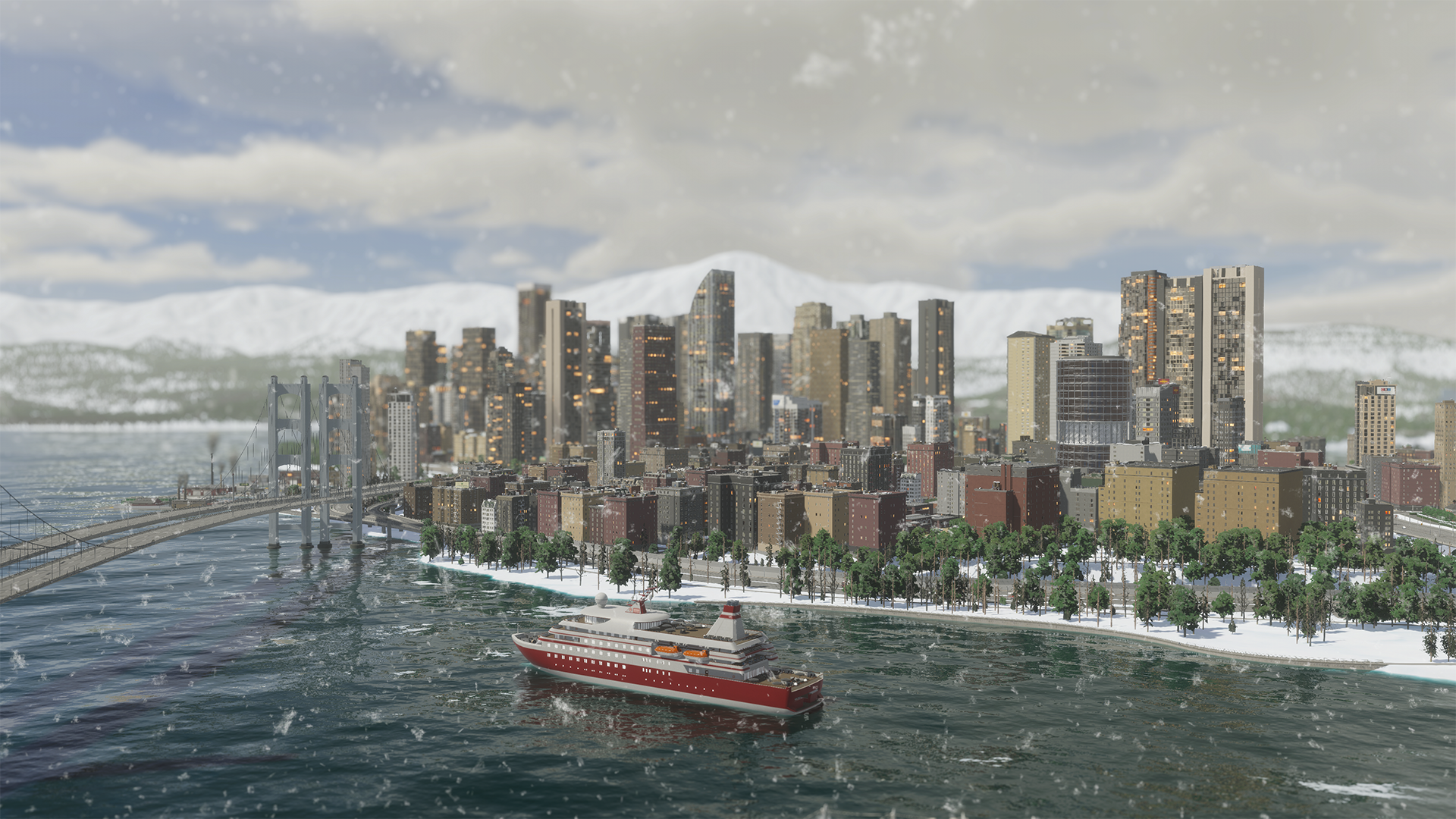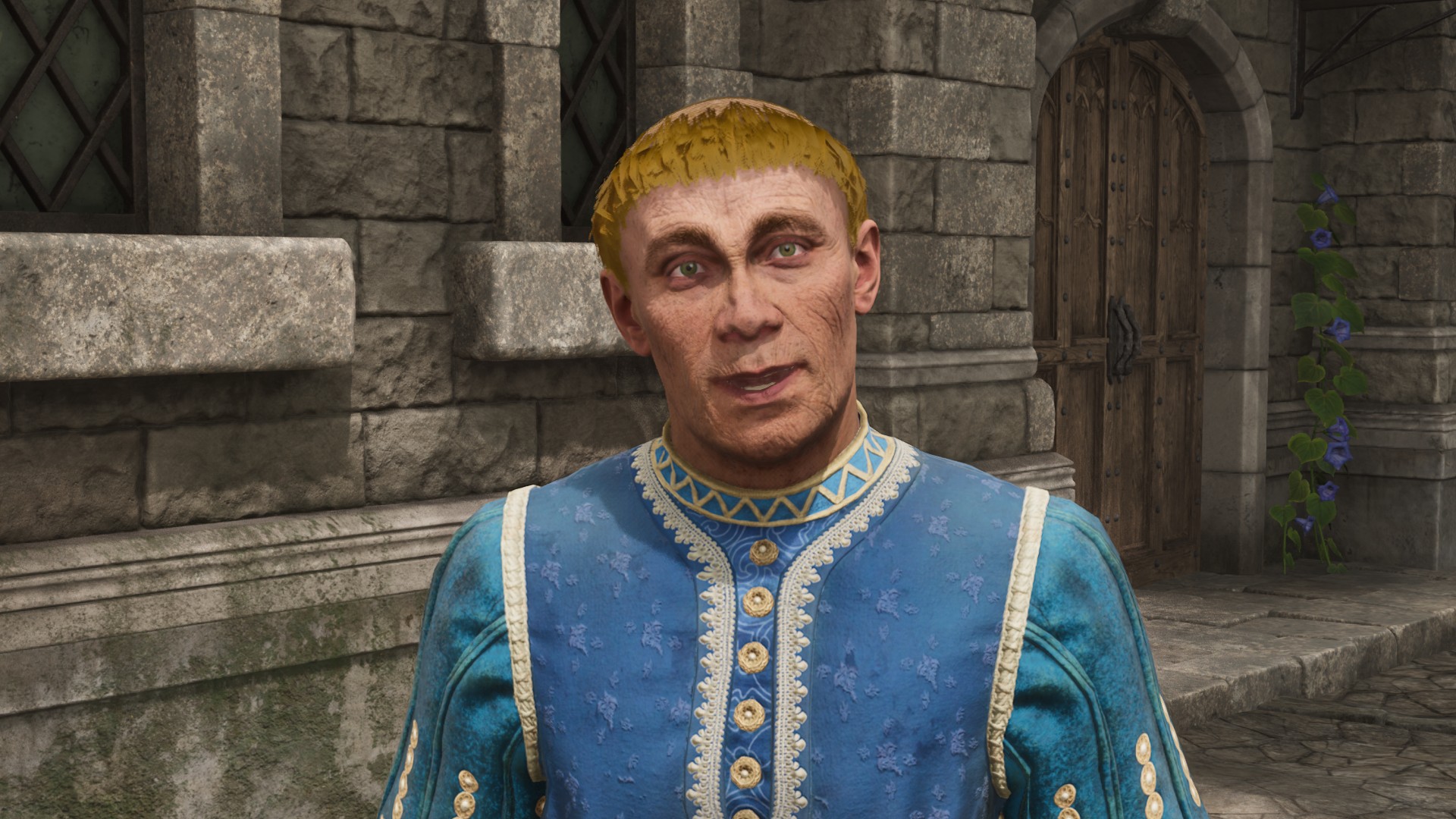
My icy heart calls for more scientific accuracy!
As an avid Cities: Skylines fan, I’m proud of Colossal Order for its dedication to realistic simulation. It’s the studio’s ability to turn graphs and traffic routes and thousands of tiny digital denizens into tangible cities that makes it all the more enjoyable. But a recent Cities: Skylines 2 feature vid has me up in arms over a glaring mistake. One that’s making my science brain twitch: Hailstorms.
I know, of all the things I could get annoyed about, I’m stuck on these tiny clumps of ice falling from the sky. But there’s something the devs have gotten fundamentally wrong about the science behind hailstorms. So, of course I’m going to tell you exactly how they’ve messed it up, and how hail should work.
“Life in a thriving city can be a whirlwind.” That’s the opener to the Cities: Skylines 2 climate and seasons feature highlight video. It begins with some gentler announcements—from simple sun and rain, to the fact that “Each map has a unique climate with reliable seasonal patterns” to offer players. All seemed well until they started going on about hail.
Colossal Order wants me to accept—against every meteorologically inclined bone in my body—what the video and dev diary say about how hailstorms work: “When the weather is cold, but not freezing, there is a possibility of a hailstorm occurring.”
No, there’s not. Not for the most part, anyway.
Meteorological mess ups
As the great City Planner Plays points out in a recent video going over the game’s announced features, hailstorms generally tend to occur in the warmer months. As the name suggests, he’s a city planner himself and has to deal with the damage they cause personally. He explains “that’s one of the reasons they’re so devastating; they damage crops, buildings and people during the months where they’re most likely to be outdoors.”
For context, hail is produced within thundercloud formations. According to Geography Realm, in the US, “Most hailstorms happen during the spring and summer months as heat and humidity build up,” since that’s when you’re most likely to see the larger thunderstorms forming.
The choice was likely a case of compromise, a way of balancing the game so all your disasters don’t happen all in the same months. And I’ve had to remind myself that while I’m used to talking about Cities: Skylines 2 in the context of an American audience, the development team is scattered around the world. Hail does tend to happen at different times of year depending on your latitudinal position, so I was willing to let it slide until I realised Colossal Order’s HQ is in Finland—a country that expects hail from May to September. It does feel like the devs have done us dirty on the science side of things, then.
Still, it’s not just the time of year that’s wrong here. The dev diary also comes out with this little titbit: “Hailstorms cause physical damage to buildings but do not destroy them.” Which doesn’t quite capture the truly destructive nature of this weather type. Let me elaborate.
Destructive nature
When I was younger, one of my favourite books was an encyclopedia of mysteries and messed up stuff that my parents (for some reason) let me read. These were stories of humans who had spontaneously combusted, leaving only their boots behind, which admittedly freaked me out a little. More to the point, one story I remember vividly involved a car windscreen that had been utterly destroyed by a piece of hail the size of a small dog.
All right, so my fallible memory might have blown it out of proportion—maybe it was closer to a tennis ball—but I’ve always had this idea in my head that hail can be really quite dangerous. And looking it up now, I’m no less frightened of these flying, and rather hard to predict, icy balls of death.
(Image credit: Paradox)
We’re not just talking broken windshields here—roofs have been known to cave in under the weight after heavy hail. In India, hailstorms have claimed the lives of thousands of farmer’s livestock, with some clumps large enough to kill cattle, taking the poor animals out “almost instantly”. Hailstorms cause over a billion dollars of damage every year. It really seems like Colossal Order is underestimating them.
Moreover, just last year at the North American hail workshop (that’s a thing), experts came out saying that hail is actually notoriously hard to predict.
While knowing when hail is coming isn’t so hard, “Predicting large hailstones is difficult from a forecasting perspective because every storm is really different, and the same atmospheric environment can produce several types of storms.” That’s according to senior scientist at Verisk Atmospheric and Environmental Research, Becky Adams-Selin.
So not only is hail firmly in the capital D for Disasters category, it’s also pretty sneaky—yet another thing that makes it so gosh darn devastating.
Application in-game
While the modeling of hailstorms might not be entirely scientifically accurate, the natural disasters Colossal Order are touting still promise to have an impact that mirrors real-world weather catastrophes.
(Image credit: Paradox)
We can expect car crashes to occur during extreme weather, clogging up the motorways and making traffic management difficult. Services will need to use extra resources keeping everyone safe, and repairing the damage to buildings will take away funding from potential building upgrades, too. There’s a lot to it, and I’m excited to jump in and experience the chaos.
And while it’s unclear whether we’ll be losing cattle to freak hail flurries in Cities: Skylines 2, I have every confidence Colossal Order’s decision to bend the rules of science came from the much more important need to balance the game out, and make it a more enjoyable experience overall. Still, given the sim’s dedication to recreating cities at such a realistic level, it would be amazing to see more accurate weather models in a game like this. Maybe it’ll happen when we hit Cities: Skylines 3.






